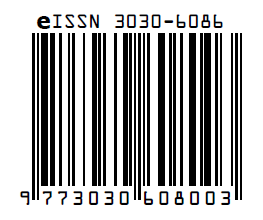Teaching Sulfur Compounds With Sunflowers
Conceptual Paper
DOI:
https://doi.org/10.24191/jca.v2i1.4660Keywords:
drawing, pharmacy, sulfur, sunflower, teachingAbstract
The heteroatoms, such as sulfur atom, are taught to the pharmacy undergraduates in their first semester of the program. The knowledge on sulfur compounds is significant, since there are available in the structural composition of antibiotics, such as the penicillin, and among others, the amino acids, and proteins. Prior to the lectures on antibiotics and other biologically important molecules, these pharmacists-in-training (PIT) were invited to name chemical compounds of their interests. The object-oriented responses include examples of heterocyclic or sulfur-containing compounds, such as sulflowers. The PIT found out that the front view of the two-dimensional (2D) structure of sulflower, would resemble the bloom of a sunflower (botanically known as Helianthus annuus ) or an eight-pointed star. The sulflower’s molecular formula is C16S8 or (C2S)8, which allow the PIT to classify it as a form of carbon sulfide (CS2). From their inspection, the substance is a highly symmetrical and planar structure, just like the disk-shaped sunflower heads. In addition, the front view of 2D structure of persulfurated coronene (PSC, C24S12), displays a unique sulfur-rich structure that consists of 12 sulfur atoms and 24 carbon atoms, arranged in a star pattern. The PIT’s discussion would deepen into the atomic bonding, the geometry of the compound, and three-dimensional (3D) molecular arrangement. The information for both hydrocarbon and heterocyclic chemistry topics were successfully shared among the PIT, via such learning educational activity. Further undergraduate research project could include the extraction and analytical investigation of the sunflowers seed extracts, that would introduce PIT to lessons on traditional natural herbal and medicinal practices, plus pharmacognosy. In addition to their practical uses, the sunflowers are also important in art and culture. In short, natural product resources like Helianthus plant species, could be chosen as an interesting and creative pharmaceutical teaching aid.
References
Bailly, C. (2022). A world tour in the name of natural products. Phytomedicine, 100 154080.
Chernichenko, K. Y., Sumerin, V. V., Shpanchenko, R. V., Balenkova, E. S. and Nenajdenko, V. G. (2006). “Sulflower”: A New Form of Carbon Sulfide. Angewandte Chemie, 118(44), 7527–7530. doi:10.1002/ange.200602190
Dong, R., Pfeffermann, M., Skidin, D., Wang, F., Fu, Y., Narita, A., Tommasini, M., Moresco, F., Cuniberti, G., Berger, R., K. Müllen and Feng, X. (2017). Persulfurated Coronene: A New Generation of “Sulflower”. J. Am. Chem. Soc., 139, 2168–2171.
Jensen, T. T., Hall, C., Potticary, J., Andrusenko, I., Gemmi, M. and Hall, S. (2019). An Experimental and Computational Study into the Crystallisation Propensity of 2nd Generation Sulflower. Chemical Communications, 55, 14586.
doi:10.1039/c9cc08346d
Lteif, L. & Eiland, L. S. (2019). The Basics of Penicillin Allergy: What A Clinician Should Know, Pharmacy, 7, 94; doi:10.3390/pharmacy7030094
Flower Show[@TheFlowerShow](July 2, 2024) Bees are in love with sunflower. [Image attached] [Tweet]. X. https://x.com/TheFlowerShow/status/1808077342062858286.
Flower Show[@TheFlowerShow](Jun 7, 2024) She grows on love ! Black sunflower for my favorite girls ! [Image attached] [Tweet]. X. https://x.com/theflowershow/status/1798816570543874095?s=43&t=elGXcESf- kAB1nUTmsEKWQ.
Guo, S., Ge, Y. & Na Jom, K. (2017). A review of phytochemistry, metabolite changes, and medicinal uses of the common sunflower seed and sprouts (Helianthus annuus L.).Chemistry Central Journal, 11, 95. https://doi.org/10.1186/s13065-017- 0328-7.
MolView (2024), version 2024-09-24, accessed via https://app.molview.com
Plants of the World Online (POWO), The Royal Botanic Gardens, Kew, accessed via https://powo.science.kew.org/taxon/urn:lsid:ipni.org:names:119003-2
PubChem (2025), accessed via https://pubchem.ncbi.nlm.nih.gov/compound/153556564
Swetha, D., Sridevi, S., Umarani, E., Sainath, N. and Saritha, A. (2022). Sulphur - An Essential Nutrient for Quality Oilseed Production. Biotica Research Today, 4(11):790-792.
Downloads
Published
How to Cite
Issue
Section
License
Copyright (c) 2025 Ibtisam Abdul Wahab

This work is licensed under a Creative Commons Attribution-NonCommercial 4.0 International License.




